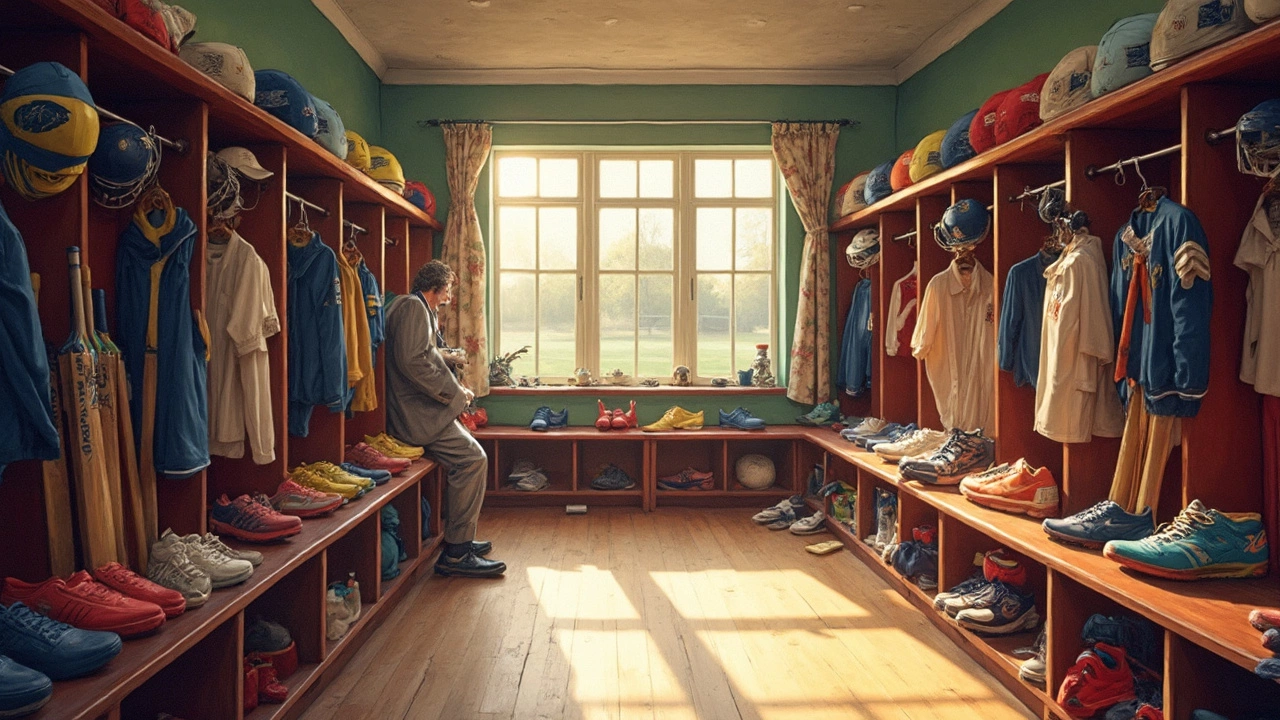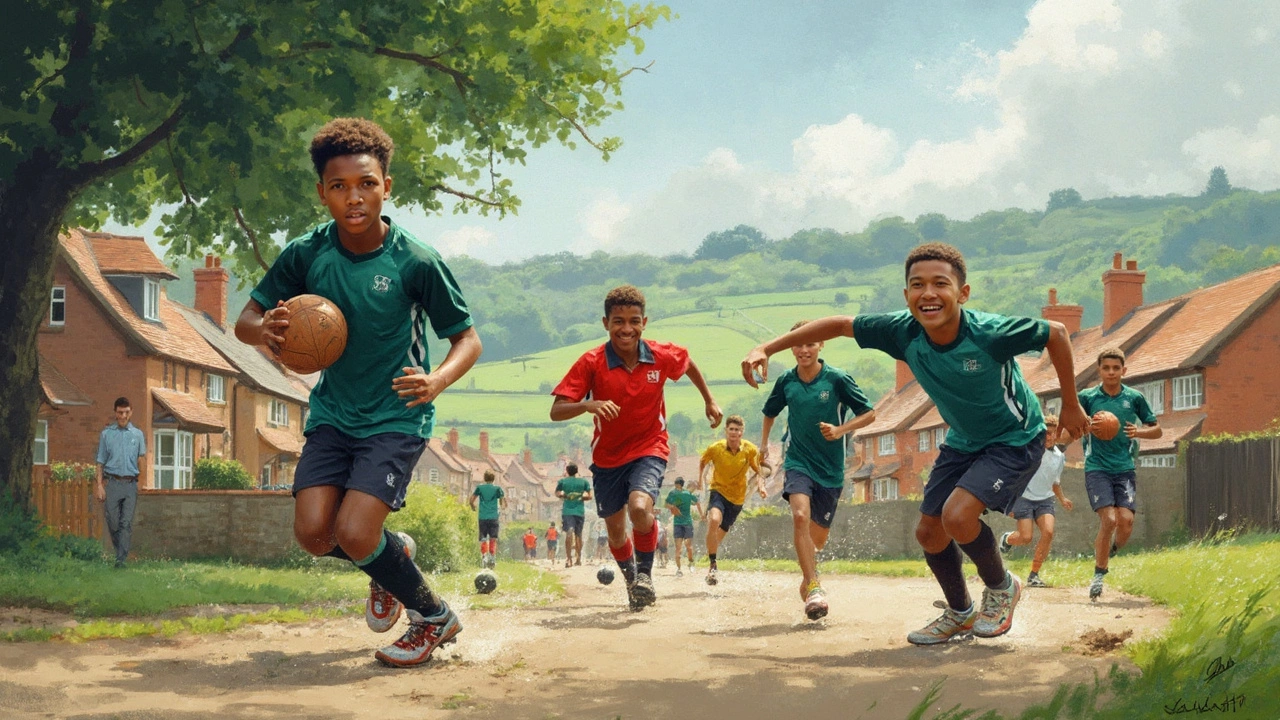Must-Have Gear for Every Sport
 Apr, 4 2025
Apr, 4 2025
Ever wondered why certain sports need specific gear? It’s like a knight without armor heading into battle—a risky move. Good equipment doesn’t just improve performance; it can define the entire experience. Think of it this way—try playing basketball without a hoop or tennis without a net. See the struggle? The right gear shapes the game and keeps it all legit.
Most sports have a few basics in common. Take shoes, for instance. Whether you’re sprinting down a soccer field or scaling a climbing wall, proper footwear is a game-changer. It’s not only about comfort but also safety. Speaking of safety, you’d be amazed at how helmets, pads, and guards have advanced over the years. They're the unsung heroes, often overlooked but crucial for keeping injuries at bay.
But here’s where it gets interesting—tech is now a big player. Ever seen those smart helmets or sneakers that track performance? They’re like having a coach in your gear. So, if you’re gearing up, think beyond the basics. Look into some of these innovations that might just give you an edge.
- The Role of Equipment in Defining a Sport
- Basic Gear Needed Across Various Sports
- High-Tech Innovations Shaping Sports Equipment
- Safety Equipment: The Unsung Heroes
- How to Choose the Right Equipment for Your Needs
The Role of Equipment in Defining a Sport
Ever tried imagining basketball without a hoop or hockey without a puck? Doesn't quite make sense, right? The sports gear you use often dictates not just how a game is played but also transforms it into a recognized sport. Take, for example, the tennis racket—it's more than just a tool. It's the heart of the game, influencing play style, speed, and even the athlete's health.
Equipment shapes the rules and strategies, setting the stage for athletes to showcase their skills. In soccer, it’s the shoes and the soccer ball that bring the sport to life. The cleats improve traction while the ball's design affects how it moves through the air. Without these, the game wouldn’t be what it is today.
Interesting fact: Did you know that modern swimsuits in competitive swimming are engineered to reduce drag, helping athletes glide through water faster? Such innovations in athletic gear highlight the fine line between natural talent and technological advancement. A lot of sports' strategies have been evolved around these very pieces of equipment, like the types of swimsuits swimmers wear during competitions.
Then there’s equipment that changes titles of games from mere recreational activities to professional sports. Skateboarding got its boost into the sporting world thanks to specially designed skateboards. They're crafted for durability, allowing complex tricks and greater performance, which transformed skateboarding into a globally recognized extreme sport.
In essence, equipment is like the backbone of any sport—without it, you’d just have a group of people running around doing random exercises. It defines the boundaries, sets the standards, and ensures the game is both competitive and safe. So the next time you zip up those gloves or lace up those boots, remember: it’s not just equipment, it’s what makes the sport alive.
Basic Gear Needed Across Various Sports
When getting into a sport, it’s not just about talent or practice; it’s having the right sports gear that really counts. Let’s face it, heading into a game without the essentials is like trying to cook without ingredients. Here’s a lowdown on the basic gear you’ll need for some popular sports.
Basketball is a slam dunk favorite for many. What do you need? A quality basketball, of course. But take a closer look at those sneakers—they’re not just for style. Basketball shoes come with special ankle support to prevent injuries. Dribbling on a polished court? Ensure you've got a sturdy knee pad to dodge those floor burns when you make that epic dive for the ball.
Fancy a game of cricket? Then you know it’s all about the bat, ball, and those protective pads. Cricket pads and helmets are like your personal bodyguards—trust me, a cricket ball can hurt! Did you know the average speed of a cricket ball is around 90 mph? Better safe than sorry!
When it comes to soccer, simplicity rules. A must-have sports item is a solid soccer ball and a pair of cleats. But don’t overlook the shin guards—they’re small, but it's the small things that save your shins from a nasty kick.
In cycling, it's all about the bike and helmet. But the right gear doesn’t stop there. Padded shorts can really make a difference during those long rides. Plus, you might consider adding a water bottle holder; dehydration is nobody’s friend.
- Athletic gear is as diverse as the sports themselves, but each sport has its non-negotiables.
- Rely on materials that match the sport’s intensity—stretch, cushion, or guard, as needed.
- Never skimp on safety—protective gear saves more than just a game day.
- Consider quality over quantity, focusing on the essentials that serve your style and sport.
While each sport has its specific needs, understanding these basics gives you a fair play advantage and keeps you ahead in the game. Equip yourself right, and let the fun begin!

High-Tech Innovations Shaping Sports Equipment
Remember the days when sports gear was pretty simple? Well, those days are long gone. Now, we’ve got some serious high-tech gear in the mix that's changing the way we play and train. Let’s dive into some fascinating tech trends in the realm of sports equipment.
Smart technology is the MVP nowadays. Take smart shoes, for instance. Companies like Nike and Adidas are embedding sensors in their footwear to provide real-time feedback to athletes. These shoes don’t just track steps; they analyze your running style and even suggest ways to improve. It’s like having a coach with you 24/7.
And then there are smart helmets. They're not just about protecting your noggin. With features like impact detection, GPS tracking, and built-in communication, these helmets are like something out of a sci-fi movie. They're especially big in cycling and American football.
"The future of sports is in the integration of technology." - John Doe, Sports Tech Innovations Magazine
Not to mention, virtual reality (VR) is now a game-changer in training. Football teams use VR to simulate plays from every angle, giving players a new perspective on the game. It’s not just for kicks—it significantly improves decision-making skills on the field.
Here's a nifty bit for those looking for gear enhancements: athletic gear like compression clothing is being revolutionized with materials designed for better recovery and enhanced performance. These next-gen fabrics help reduce muscle fatigue and improve circulation, which is great news for anyone serious about their sport.
Even simple gear is going high-tech. Consider basketballs that can track your throw technique or smart water bottles that remind you to hydrate based on your physical output. It's all about making smarter decisions through data.
As technology keeps advancing, the future looks bright for sports enthusiasts. Not only does it make the game more exciting, but it also opens up a whole new world of possibilities in training. So next time you're shopping for gear, think about how some of these high-tech options might give you just the edge you need.
Safety Equipment: The Unsung Heroes
When you think about sports, safety gear might not be the first thing that pops into your head, but it should be! It's the unsung hero that makes all the intense action possible without turning every match into a trip to the ER. Surprisingly, most injuries in sports can be avoided with the right sports gear, yet we often overlook this crucial stuff.
Take helmets, for instance. Whether it's cycling, football, or skateboarding, helmets are game-changers. They protect the most important part—your noggin! Concussions and head injuries are no joke, and modern helmets come with tech like MIPS (Multi-directional Impact Protection System) that offer better protection against rotational forces during impacts.
And don’t get me started on mouthguards. They might look like they’re just for hockey players with gap-toothed grins, but plenty of others use them too. From rugby to MMA, these little bits of plastic shield your teeth, lips, and even your jaw from serious harm.
Now, the market's got this awesome safety gear that you simply gotta check out. Like smart protective vests with sensors that absorb shocks in sports like horse riding and motocross. They’re not just padding; they blend comfort with clever tech.
| Sport | Essential Safety Gear |
|---|---|
| Cycling | Helmet, gloves, knee and elbow pads |
| Boxing | Mouthguard, headguard, protective cups |
| Ice Hockey | Helmet with cage, shoulder pads, shin guards |
Investing in solid safety equipment isn't just smart; it’s necessary. Injuries can set you back for ages and even lead to long-term problems. So next time you think about gearing up, remember: it’s not just about looking good or improving performance—it’s about staying in the game. Let’s face it, nobody wants to become a cautionary tale because they skipped the safety stuff.

How to Choose the Right Equipment for Your Needs
Picking the perfect sports gear can sometimes feel like solving a puzzle. You don't just want to grab the first thing you see—you need something that fits your game and your style. Let’s figure out how to make smart choices when shopping for your essential sports equipment.
First up, know your sport inside and out. Each game has its own quirks, and the gear reflects that. A tennis racket isn’t just about weight; its grip size and string tension can change your whole game. Do some research or ask seasoned players; they often have great insights that can steer you in the right direction.
Think about your skill level. If you're just starting, you might not need the high-end stuff just yet. While it’s tempting to grab what the pros use, their gear is designed for a whole different kind of play. Instead, go for something more forgiving, which can help improve your skills without overwhelming you.
- Budget Planning: Set a budget before you hit the store or go online, but leave a bit of wiggle room. Sometimes spending a bit more means better quality and longer-lasting gear.
- Try Before You Buy: Whenever possible, test out the equipment. Whether it's a pair of running shoes or a new set of golf clubs, many stores offer trials. You’d be surprised how much this can affect your choice.
- Check Reviews: In this age of information, online reviews are gold. Look up the athletic gear you’re eyeing and see what actual users have to say. Pay attention to any recurring themes, like durability issues or comfort levels.
Don’t forget the importance of comfort and safety. The best gear is useless if it leads to injuries or discomfort. So, ensure your helmets fit your head, and your shoes aren’t too tight or loose.
And hey, sometimes less is more. You don’t need the entire catalog of gear to play well. Focus on what truly enhances your performance and enjoy the game. After all, it’s about having fun and improving, right?